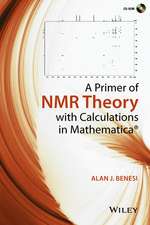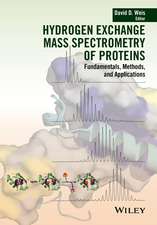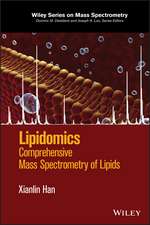Cellular Nanoscale Sensory Wave Computing
Editat de Chagaan Baatar, Wolfgang Porod, Tamas Roskaen Limba Engleză Hardback – 7 dec 2009
| Toate formatele și edițiile | Preț | Express |
|---|---|---|
| Paperback (1) | 942.76 lei 6-8 săpt. | |
| Springer Us – 28 noi 2014 | 942.76 lei 6-8 săpt. | |
| Hardback (1) | 948.79 lei 6-8 săpt. | |
| Springer Us – 7 dec 2009 | 948.79 lei 6-8 săpt. |
Preț: 948.79 lei
Preț vechi: 1157.06 lei
-18% Nou
Puncte Express: 1423
Preț estimativ în valută:
181.54€ • 189.57$ • 149.92£
181.54€ • 189.57$ • 149.92£
Carte tipărită la comandă
Livrare economică 15-29 aprilie
Preluare comenzi: 021 569.72.76
Specificații
ISBN-13: 9781441910103
ISBN-10: 1441910107
Pagini: 260
Ilustrații: VIII, 249 p.
Dimensiuni: 155 x 235 x 25 mm
Greutate: 0.54 kg
Ediția:2010
Editura: Springer Us
Colecția Springer
Locul publicării:New York, NY, United States
ISBN-10: 1441910107
Pagini: 260
Ilustrații: VIII, 249 p.
Dimensiuni: 155 x 235 x 25 mm
Greutate: 0.54 kg
Ediția:2010
Editura: Springer Us
Colecția Springer
Locul publicării:New York, NY, United States
Public țintă
ResearchCuprins
A Brief History of CNN and ONR.- Cellular Wave Computing in Nanoscale via Million Processor Chips.- Nanoantenna Infrared Detectors.- Memristors: A New Nanoscale CNN Cell.- Circuit Models of Nanoscale Devices.- A CMOS Vision System On-Chip with Multi-Core, Cellular Sensory-Processing Front-End.- Cellular Multi-core Processor Carrier Chip for Nanoantenna Integration and Experiments.- Circuitry Underlying Visual Processing in the Retina.- Elastic Grid-Based Multi-Fovea Algorithm for Real-Time Object-Motion Detection in Airborne Surveillance.- Low-Power Processor Array Design Strategy for Solving Computationally Intensive 2D Topographic Problems.
Textul de pe ultima copertă
In this book the emerging and converging architecture of morphic cellular wave computers based on the concept of Cellular Neural/Nonlinear Network (CNN) is introduced in a practical way. The authors include descriptions of hardware architectures, software algorithms, as well as a possible new CNN cell based on memristor. The first single chip cellular wave computer- a vision system on a chip (VSoC) is also discussed.
Cellular Nanoscale Sensory Wave Computing is a result of a Multidisciplinary University Research Initiative (MURI) project that has been funded by the Office of Naval Research and completed recently. The results manifest a new way of thinking about sensory computing, as well as it is one of the first successful attempts to bridge the gap between nanoscale (smaller than 100 nm) devices and CMOS integrated circuits with stored programmable algorithms and software on the system level.
Cellular Nanoscale Sensory Wave Computing is a result of a Multidisciplinary University Research Initiative (MURI) project that has been funded by the Office of Naval Research and completed recently. The results manifest a new way of thinking about sensory computing, as well as it is one of the first successful attempts to bridge the gap between nanoscale (smaller than 100 nm) devices and CMOS integrated circuits with stored programmable algorithms and software on the system level.
Caracteristici
Discusses the combination of sensing and computation on a single chip, particularly an entire vision system on a chip Addresses the cellular wave computing concept and architecture in regards to emerging post-CMOS nanoelectronics architecture as well as the many thousand core chips Describes many new developments, such as the nanoscale antenna and 3D monolithic integration of sensing and computing Presents the practical and complex algorithms for mission critical applications running on the new cellular visual microprocessors as well as on the 1024 core FPGA Covers a new kind of computer science and algorithmic base that is emerging for million processor systems with several thousand processor chips Includes a special aspect on biological relevance which explains the multichannel processing in a mammalian retina in connection to the cellular wave computing paradigm






